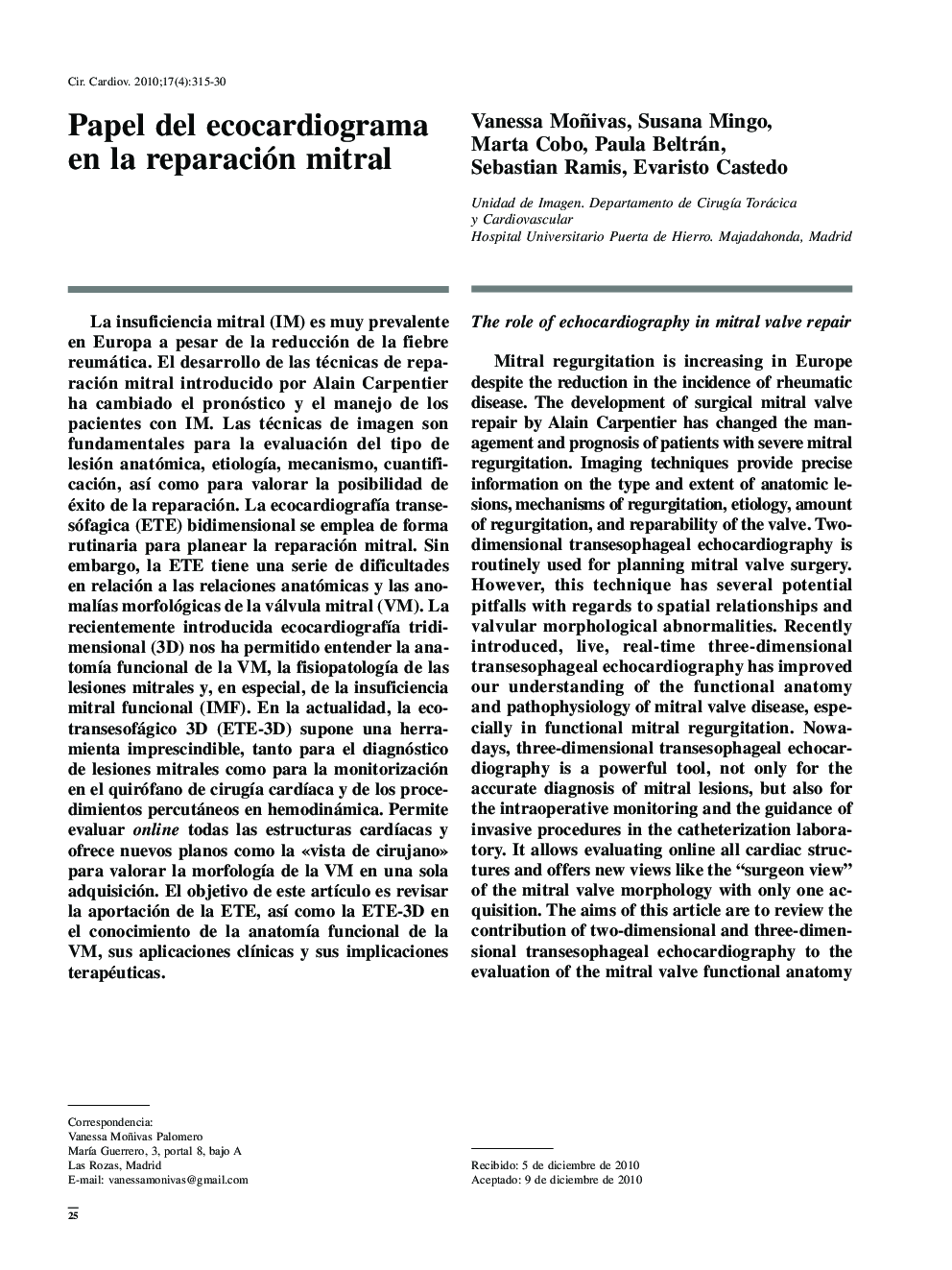| Article ID | Journal | Published Year | Pages | File Type |
|---|---|---|---|---|
| 2908087 | Cirugía Cardiovascular | 2010 | 16 Pages |
La insuficiencia mitral (IM) es muy prevalente en Europa a pesar de la reducción de la fiebre reumática. El desarrollo de las técnicas de reparación mitral introducido por Alain Carpentier ha cambiado el pronóstico y el manejo de los pacientes con IM. Las técnicas de imagen son fundamentales para la evaluación del tipo de lesión anatómica, etiología, mecanismo, cuantificación, así como para valorar la posibilidad de éxito de la reparación. La ecocardiografía transesófagica (ETE) bidimensional se emplea de forma rutinaria para planear la reparación mitral. Sin embargo, la ETE tiene una serie de dificultades en relación a las relaciones anatómicas y las anomalías morfológicas de la válvula mitral (VM). La recientemente introducida ecocardiografía tridimensional (3D) nos ha permitido entender la anatomía funcional de la VM, la fisiopatología de las lesiones mitrales y, en especial, de la insuficiencia mitral funcional (IMF). En la actualidad, la ecotransesofágico 3D (ETE-3D) supone una herramienta imprescindible, tanto para el diagnóstico de lesiones mitrales como para la monitorización en el quirófano de cirugía cardíaca y de los procedimientos percutáneos en hemodinámica. Permite evaluar online todas las estructuras cardíacas y ofrece nuevos planos como la «vista de cirujano» para valorar la morfología de la VM en una sola adquisición. El objetivo de este artículo es revisar la aportación de la ETE, así como la ETE-3D en el conocimiento de la anatomía funcional de la VM, sus aplicaciones clínicas y sus implicaciones terapéuticas.
Mitral regurgitation is increasing in Europe despite the reduction in the incidence of rheumatic disease. The development of surgical mitral valve repair by Alain Carpentier has changed the management and prognosis of patients with severe mitral regurgitation. Imaging techniques provide precise information on the type and extent of anatomic lesions, mechanisms of regurgitation, etiology, amount of regurgitation, and reparability of the valve. Two-dimensional transesophageal echocardiography is routinely used for planning mitral valve surgery. However, this technique has several potential pitfalls with regards to spatial relationships and valvular morphological abnormalities. Recently introduced, live, real-time three-dimensional transesophageal echocardiography has improved our understanding of the functional anatomy and pathophysiology of mitral valve disease, especially in functional mitral regurgitation. Nowadays, three-dimensional transesophageal echocardiography is a powerful tool, not only for the accurate diagnosis of mitral lesions, but also for the intraoperative monitoring and the guidance of invasive procedures in the catheterization laboratory. It allows evaluating online all cardiac structures and offers new views like the “surgeon view” of the mitral valve morphology with only one acquisition. The aims of this article are to review the contribution of two-dimensional and three-dimensional transesophageal echocardiography to the evaluation of the mitral valve functional anatomy and to summarize their clinical applications and therapeutic implications.
